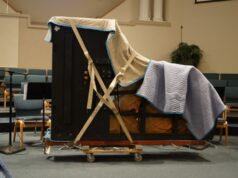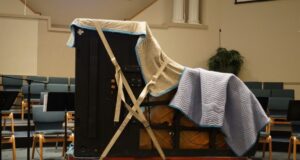CONSTRUCTION SPENDING INCREASED BY 5.9 PERCENT BETWEEN NOVEMBER 2012 AND 2013 AMID GROWING PRIVATE SECTOR DEMAND FOR CONSTRUCTION
Spending Levels Held Back by Public Sector Declines, Association Officials Urge Congress and Administration to Work Together to Boost Economy, Pass Vital Infrastructure Measures
WASHINGTON, D.C. – January 3, 2014 – (RealEstateRama) — Total construction spending increased between October and November and for the year amid growing private-sector demand, according to an analysis of new Census Bureau data by the Associated General Contractors of America. Association officials noted, however, that the spending levels were held back by declining public sector investments for both the month and the year.
“The nonresidential construction spending figures are even more positive than they appear, with most categories now positive year-over year,” said Ken Simonson, the association’s chief economist. “The outlook appears favorable for many types of private nonresidential and multifamily construction, but remains flat or negative for public spending.”
Construction put in place totaled $934 billion in November, rising 1.0 percent since October and up 5.9 percent since November 2012. Private residential construction spending increased by 1.9 percent in November and jumped 17 percent from a year earlier. Private nonresidential spending climbed 2.7 percent for the month and 1.0 percent year-over-year. Public construction spending dropped 1.8 percent for the month and 0.2 percent over 12 months.
Over the past 12 months, the biggest jump in construction spending has occurred in new multifamily construction, which rose 0.9 percent for the month and 36 percent year-over-year. The lodging sector recorded the second highest annual gain, with spending rising 32.7 percent for the year and 0.3 percent for the month. Spending on communications facilities experienced the largest monthly increase, jumping 11.2 percent in November, although it is still down 10.5 percent for the year.
The largest private nonresidential category, power construction—which includes oil and gas field and pipeline projects as well as power plants, renewable power and transmission lines—increased by 3.3 percent in November but is actually down 24.2 percent for the year. Simonson noted, however, that there was a surge in power construction during the last quarter of 2012 as contractors rushed to finish wind projects before the expected expiration of the wind production tax credit at the end of 2012. Those credits were extended for projects that broke ground by the end of 2013, explaining the more recent surge. “Both the electricity and oil and gas components of power construction should do well in 2014,” he added.
Highway and street construction, the largest public category, declined by 0.4 percent in November but is up 4.6 percent compared to a year ago, Simonson noted. The next largest public niche, educational construction, increased by 1.1 percent for the month but was unchanged for the year, he added.
Association officials noted that the spending figures would have been even better had it not been for the public sector declines. They urged Congress and the administration to work together in 2014 to pass vital transportation and other infrastructure legislation. “Finding new ways to fund repairs to our aging infrastructure will help the construction industry grow and boost our broader economy,” said Stephen E. Sandherr, the association’s chief executive officer.
















